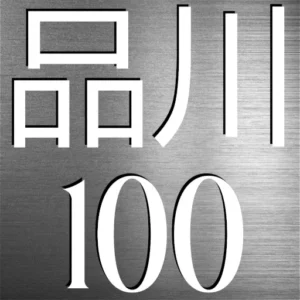What is it?
A Buddhist temple. Sōtō sect of the Zen school of Buddhism. And an event; the twice yearly festival of Sentaikojin.
Official Site
The temple was originally established as a sub-temple (tatchu) of the nearby Kaienji Temple by Fuyama Toyo in 1673 and was known as Zuirin-in. It was not until 1690, during the time of the fifth generation of Kaienji Temple, Bun Gai So Ko, that it became an independent temple and was renamed Kaiunji.
The main deity of the temple is the Eleven-faced Kannon (十一面観音 Jūichimen Kannon.) The temple is also known for enshrining the deity “Sentaikojin” and is famous for the Sentaikojin Festival. This deity was fervently worshipped as a kitchen god not only in Shinagawa but also in Edo (old Tokyo) and its surrounding areas.
The temple grounds are spacious and house historical buildings and power stones, making it a sight to behold. The temple is also a part of the Edo Thirty-Three Kannon Pilgrimage route.
It’s worth noting that the temple was not always located in its current location. It was moved to its current location in Shinagawa in 1690
Sentaikojin Festival.
In the temple the deity Sentaikojin, also known as Sentaikojin-Oh, is enshrined. This deity was fervently worshipped as a kitchen god not only in Shinagawa but also in Edo (old Tokyo) and its surrounding areas.
The Sentaikojin Festival is held twice a year, on the 27th and 28th of March and November. During these festivals, many worshippers visit the temple, and numerous stalls are set up, creating a lively atmosphere. The Sentaikojin deity was not originally from Shinagawa but was moved to Kaiunji Temple in 1770. It was initially enshrined in the residence of the Nabeshima clan, the lords of Hasuike in Hizen Province (now Saga Prefecture), located in Shibafutatsukeya.
The deity Sentaikojin was originally enshrined in Aragami no Hara in Amakusa District, Higo Province (now Kumamoto Prefecture), and was known as Ni-Aragami. In 1637, during the Shimabara Rebellion, Nabeshima Kaishu Naotune, who was suppressing the rebellion, prayed for the enemy’s surrender at the shrine of Ni-Aragami in Aragami no Hara when he arrived in Amakusa from his Edo residence.
During the battle, each daimyo’s forces were overwhelmed by the strong offensive of the rebels and were at a disadvantage. However, the situation was stabilized by Naotune’s attack. When Naotune set out for battle, divine soldiers appeared from nowhere, attacked the enemy at the head of Naotune’s camp, and protected Naotune. Naotune felt this was the protection of Aragami, brought back the statue of the deity when he returned to Edo, built a hall in his lower residence, and enshrined it there.
This tradition aligns with historical facts. Naotune Nabeshima was the fifth son of Sagami Lord Nabeshima Katsumoto, and it is a fact that Naotune fought in Amakusa. It is also clear from records that the deity was moved from the Nabeshima family’s lower residence in Futatsukeya to the precincts of Kaiunji Temple in 1770. It is said that during the Sentaikojin Festival, retainers from the Nabeshima family came to guard the temple, and lanterns from the Nabeshima family were placed around the temple grounds.
The Sentaikojin Festival is still held on the same dates as in the Edo period, the 27th and 28th of March and November. Many people gather to worship, and a shrine housing the deity is now offered.
Where is it?
| what3words | ///known.recovery.equality |
| latitude longitude | 35.6091852 139.7432394 |
| Nearest station(s) | Aomono-yokochō |
| Nearest public conveniences | Aomono-yokochō station |
Show me a sign.

Eight out of 10. Except when they have a festival on. That’s when they put a food stall in front of it!
Withervee says…
In the grounds of Kaiunji Temple is a stone seated Jizo statue, commonly known as Heizo Jizo. It is enshrined in a small wooden chapel. There is a folktale about this Jizo…
A beggar named Heizo, who was at the execution grounds in Suzugamori, went to Takanawa to ask for money, and on his way back, he found a large sum of money, more than 100 ryo, on the outskirts of Minami-Shinagawa. He did not embezzle it, and, still hungry, waited at the place where he found it for the owner to appear, and then returned it to the samurai of the Sendai domain who had lost it. Instead of accepting the 20 ryo that the samurai offered as a token of gratitude, Heizo took only 600 mon, his two days’ earnings, and returned to his hut. When Heizō told this story to his two comrades, the two men, in their drunken rage, said that Heizō had foolishly embezzled the money and that all three of them could have given up begging, and so they punched him, hitting him in the wrong place and causing him to die. When the samurai heard of Heizō’s death, they took his body, held a funeral for him, and buried him under the row of pine trees in Aomono Yokocho, where they erected a stone statue of Jizo as a memorial for him. It is said that if you tie this Jizo with a rough rope and make a wish, your wish will come true.
This Jizo was later moved to the Kaiunji Temple in October 1900 when the Keikyu Main Line was built .
Comments about toilets.
Further reading
links
While your there…
text about things to look at with or without links and or links to other pages

